The Indian calendar of Landslide disasters is literally dotted with catastrophic events, most of which, by hindsight, look self imposed and probably avoidable. If landslides could plead their cases in the courts of law, a great majority of them will come out unscathed, after convincingly proving that the boot is on the other leg. It is we who have flouted the basic rules of slope safety by one hand, while turning over the pages of the landslide calendar, by the other hand, without remorse. The increasing frequency and the fatal consequences of landslides are the proof enough that our approach to landslide disaster mitigation in India has thusfar been lackadaisical. While we are justly proud of our Armed Forces, National Disaster Response Force, Indo-Tibetan Police, Border Roads Organization and others for their heroic deeds of rescue, saving lives at the expense of their own, it's the sad ground reality that our preventive and mitigatory actions are no match to the scale and complexity of landslide problems we face, and time has come when we should either vow to pull the plug on the prevailing pedestrian and whishy-washy approach to landslide disaster mitigation in India , or further slide down to the tipping point.
Whenever major landslides strike different parts of India inflicting untold misery, we often ritualistically shed crocodile-tears to console the kith and kin of those killed or injured with tons of sympathies, and compensate lives lost with some promises and money. Experts and managers-in-charge hurriedly summon meetings, seminars and conferences which often end up with research papers, investigation reports and recommendations. By now, we have scores of reports and piles of recommendations, but, alas, the very same exercise is bound to repeat when the next major landslide hits us. Between the two landslide disasters, our effort has never been forceful enough to take the bull by the horns and permanently fix at least such of those landslides which stare us in the face, 24 x7!
The Indian National Academy of Engineering (INAE) took suo moto cognizance of the above ground reality bearing in mind the fact that India is on the fast track of development, and disasters due to landslides can no longer be allowed to frustrate progress. Currently, our approach remains pedestrian because the associated engineering practices are unremarkable, the existing institutional mechanisms appear dysfunctional, the culture of safety is on the decline, and worst of all, the frequency, intensity, damage potential and the devastating impact of landslides are on the increase, accentuated by extreme weather events, unregulated urbanization and non-engineered construction.
Recognizing the severe limitations of the conventional approach, INAE built the roundtable meeting of landslide experts on 11 May 2015 in New Delhi, on the foundation of a series of nationwide pre-roundtable consultations aimed at answering vital questions, otherwise languishing on the back-burner. The roundtable concluded that a proactive strategic and determined approach, powered by a strong political and administrative will, can put us back on the track to safety because, unlike earthquakes and tsunamis, most landslides are predictable, preventable, and controllable, if managed with appropriate interventions of Science & Technology.
Of the various recommendations made at the roundtable, the most significant is the one seeking the establishment of an autonomous and empowered National Centre for Landslide Management for focused, coordinated and holistic attention to landslide management. Currently, many institutions in India are engaged in pursuing diverse aspects of the subject, but there is no visible excitement, binding force, coordinated effort, and accountability to the nation. Under the National Disaster Management Act of 2005, we created National Institute of Disaster Management. It, inter alia, runs training programmes on landslide management, way below the state-of-the-art level. It being the disaster mitigation face of India, now is the time for a SWOT analysis to know how much it has delivered, what difference it has made on the ground, and how it could be strengthened to measure upto its responsibilities? Geological Survey of India is the national nodal agency on landslides for over a decade, but that does not diminish the need for an autonomous center because the existing institutional mechanisms have fallen short of delivering, all these years, and their mere cosmetic reorganization or strengthening will not suffice. The proposed Centre should play the role as an apex national institution for landslide management, and be accountable to the nation.
There are large parts of our country in which hazards due to landslides co-exist with other hazards, like floods and earthquakes. In these multi-hazard areas, the landslide risk reduction plans will necessarily have to be subordinate to the multi-hazard risk reduction plans. Currently no such plans and strategy exists. If they do, they are insensitive to the multi-hazard reality. It is in this background that the roundtable has laid emphasis on preparation of short- (0-3 years), medium- (3-10 years) and long-term (10-20 years) landslide management plans at the national, state and district levels in the multi-hazard context, through multi-disciplinary teams, within one year. Besides frontally addressing the present and the emerging challenges, providing strategies for coordinated action, and promoting sound engineering practices, the roundtable saw the need for a standing order to ensure regular updating, reaffirmation and re-notification of the various plans, in keeping with their dynamic nature.
One wonders why India, with such a rich pool of human resource, has resigned to the option of living with landslides, relying for so long on palliative and quick-fix approaches to landslide remediation. Paucity of funds, absence of delivery capacity, and urgency to deal with immediate landslide danger are generally being cited as the reasons. The capital intensive nature of permanent measures and unaffordability are the arguments often advanced to justify inaction. However, the truth is that the benefits of permanently fixing landslides far overweigh capital investments. It is with this thinking that a time-bound national programme for controlling all major landslides has been recommended with onetime funding by the Central Government. There is the need to ensure that the solution finally picked for adoption out of a plethora of technological possibilities, must necessarily pass through the process of comparative evaluation of all options, with the eco-friendly bias.
No matter what we do, the success will continue to elude us if we do not fortify landslide management by introducing innovative techno-legal and techno-financial practices. For all ongoing and new development projects involving landslide risk management, the project construction and the corrective action for countering the construction-related, visible or anticipated slope failures and environmental damage before, during or after the construction stage, ought to be considered in design as its inseparable parts. This could be achieved by discontinuing the conventional practice of reflecting the costs of corrective actions as separate budget items, and by creating innovative techno-legal and techno-financial enabling environment. Adequate budget for the above purpose, including the maintenance costs, must be sanctioned as a package and all major landslide projects should pass through a mandatory peer-review by independent panels of experts.
The INAE roundtable, inter alia, unmasked the contentious link between the poor quality of detailed project reports (DPRs) and the contractual disputes, and cost and time over-runs. Ensuring eco-friendly and techno-economically sound DPR’s was therefore considered critical to efficient project implementation. The need for accreditation of consultancy firms, capacity building of technical agencies within the Government, strengthening of the institutional arrangements for vetting and approvals of DPRs, a Third Party Inspection and audit, Disaster Impact Assessment of all major projects, and permitting mid-course modification of ongoing sanctioned works (to account for the new information exposed during investigation) was underscored.
There is a widespread disappointment in the country on the quality of landslide investigation. What the credibility of pathology report means to a patient, so does the quality of the investigation report means to the landslide management. Often times, there is a visible disconnect between the actually implemented control measures in the field and the landslide investigation report. The reasons for this are many. Landslide investigation in difficult terrains and inclement weather need higher expertise, more time to plan and out-of-the-ordinary implementation capacity which we seldom possess. Even in cases where adequate time is available, there are not many institutions and trained teams in our country with multi-disciplinary expertise to scientifically formulate an investigation plan, carry out credible investigation, and deliver peer-reviewed recommendations for time bound implementation. Then there are real-life situations in which Geotechnical investigations cannot be planned and frozen in time and space because of site complexities and ensuing uncertainties. A thorough Geotechnical investigation should therefore be a mandatory prerequisite to the planning and design of landslide control measures.
The other recommendations of the roundtable call for initiatives- to establish strong communication between senior professionals, development planners and decision makers for building teams and teamwork; create pace-setting best practices of community-centric early warning systems and accord the highest priority to R&D on topics such as earthquake-induced landslides, role of extreme weather events in landslide studies, approaches to landslide risk and damage assessment, development of innovative technologies for effective utilisation of landslide debris and other wastes, and unfolding of fundamental mechanisms of the most problematic Indian landslides.
A very strong case has been made for credible and comprehensive documentation of landslides and landslide disasters. The emphasis stems from the fact that the universe of landslides is fascinating because every inch of landslide exposed, deepens our questions and taxes our imagination. What a landslide reveals at its surface, if not explored deeper, may sometimes make us conclude at the expense of what is hidden, not-known, unseen or not-understood. Our ensuing research papers and study reports naturally reflect more of our own perceptions built on the pile of observations and past experience known for subconscious loyalty to the widely accepted trends and theories. In many cases, vital field evidences get erased even before landslide investigations begin and facts get lost until they resurface in some other landslide at some other time and location. Many landslide case-records published after due process of scholarly studies and debate go seldom challenged because the publications appear scholarly at their face value. The need to write credible monographs is therefore critical.
“We cannot solve the problems we have created with the same thinking which created them”, said Albert Einstein. And according to Seneca, “If a man does not know to what port he is steering, no wind is favourable to him.” Clearly we need a sense of direction, clarity of ideas and the excitement of building Team India. In Bob Proctor’s words: “If you see it in your mind, you’re going to hold it in your hands!”
(The writer is Chairman, Forum on Engineering Interventions for Disaster Mitigation, Indian National Academy of Engineering, New Delhi)
Published Date: 16th July 2015, Image Source: http://www.dnaindia.com
(Disclaimer: The views and opinions expressed in this article are those of the author and do not necessarily reflect the official policy or position of the Vivekananda International Foundation)

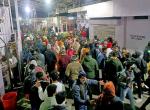
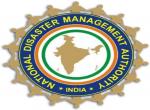
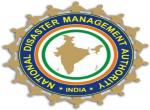


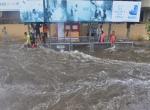
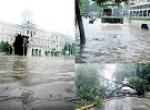
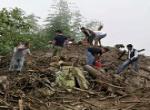
Post new comment